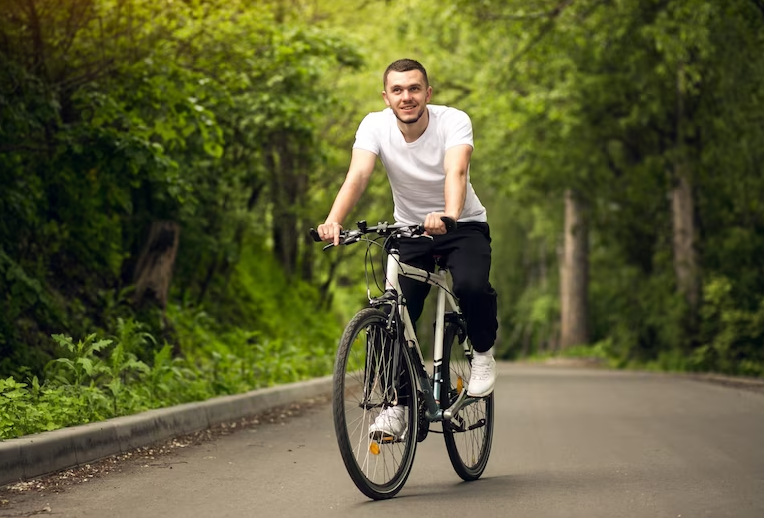Do you want to learn how to ride a bike? It’s a great skill for anyone, offering joy, freedom, and adventure. Cycling is also good for your health, fitness, and environment.
It can burn calories, strengthen muscles, improve heart health, and lower emissions. Plus, it can save you time and money on transportation, as you can avoid traffic and park easily. In this post, we will show you how to ride a bicycle safely and confidently.
You will learn how to choose the right bike and gear, find a good place to practice, master the basic skills, and advance to more techniques. By the end of this post, you will be ready to enjoy cycling!
How to Ride a Bike?
Following are the six points to learn riding bicycle:
1. Choose the Right Bike & Gear
Choosing the right bicycle and gear is the first step to learning how to ride a bike safely. There are different types of bikes for different purposes and terrains. Road bikes are fast and lightweight, but not very comfortable or stable on rough surfaces.
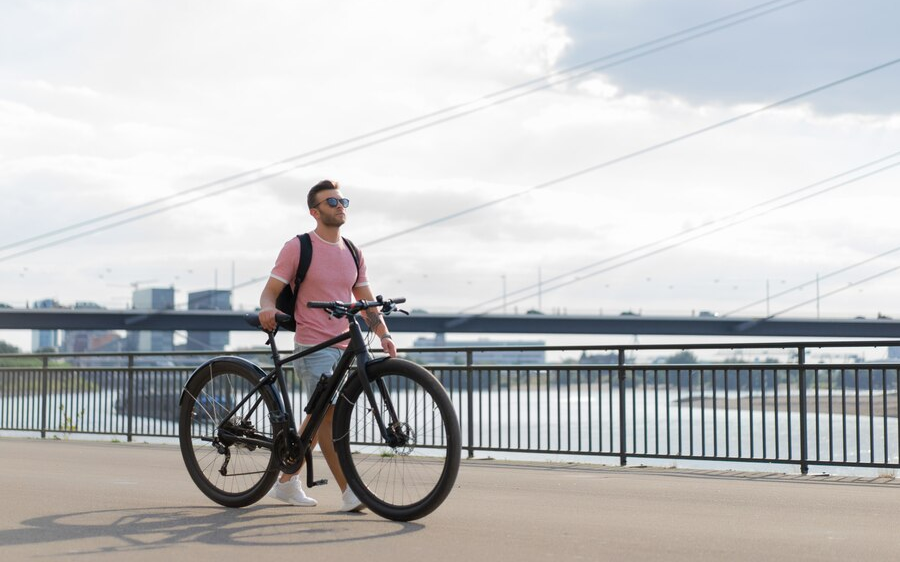
Mountain bikes are durable and versatile, but not very efficient or aerodynamic on smooth roads. Hybrid bikes are a combination of both, offering a balance of speed and comfort.
To select a bicycle that fits your size, style, and budget, you should measure your height and inseam, and test ride different models and sizes. You should also consider the features and components of the bicycle, such as the frame, wheels, brakes, gears, and suspension.
Besides the bicycle, you also need some essential gear and accessories to ride safely and comfortably. These include a helmet, gloves, proper clothing, proper footwear, lights, bell, lock, and water bottle.
2. Set Up Your Bike
Before you ride your bicycle, you need to set it up properly. This will make your cycling experience more comfortable and safe.

Here are some steps to follow:
- Adjust the saddle height so that your leg is slightly bent when the pedal is at the lowest position. This will help you pedal efficiently and avoid knee pain.
- Check the tire pressure and inflate them to the recommended level. This will prevent flats and improve traction.
- Ensure proper bike maintenance by cleaning the chain, lubricating the moving parts, and checking the brakes and gears. This will extend the life of your ride and prevent accidents.
- Perform a basic bicycle safety check by inspecting the wheels, frame, handlebars, and lights. This will help you spot any potential problems and fix them before you ride.
By following these steps, you can set up your bike and enjoy a smooth and safe ride.
3. Find Suitable Place to Practice
If you want to learn how to ride a bike as an adult, you need to find a suitable place to practice. A good place should be spacious, flat, and free of traffic, obstacles, and distractions. Some ideal locations are parks, trails, or empty parking lots.
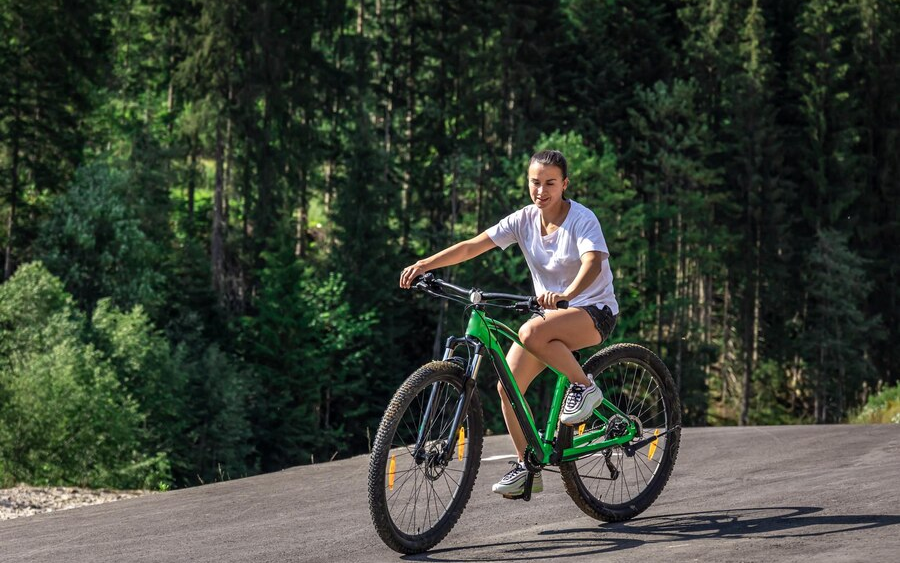
These places offer enough room for you to maneuver your bicycle and learn the basics of balance, steering, and braking. As a result, injuries and accidents are also reduced. You should avoid busy streets, crowded areas, and rough terrains until you are more confident and skilled.
It is also helpful to have a friend or family member to assist and encourage you. They can hold your bike, give you tips, and cheer you on. Having someone to support you can make your learning experience more fun and enjoyable.
4. Get On & Off the Bike
Getting on and off a bicycle is a simple skill that anyone can learn with some practice. To get on a bike, you need to stand next to it and hold the handlebars with both hands. Then, swing your leg over the seat and place your feet on the pedals.
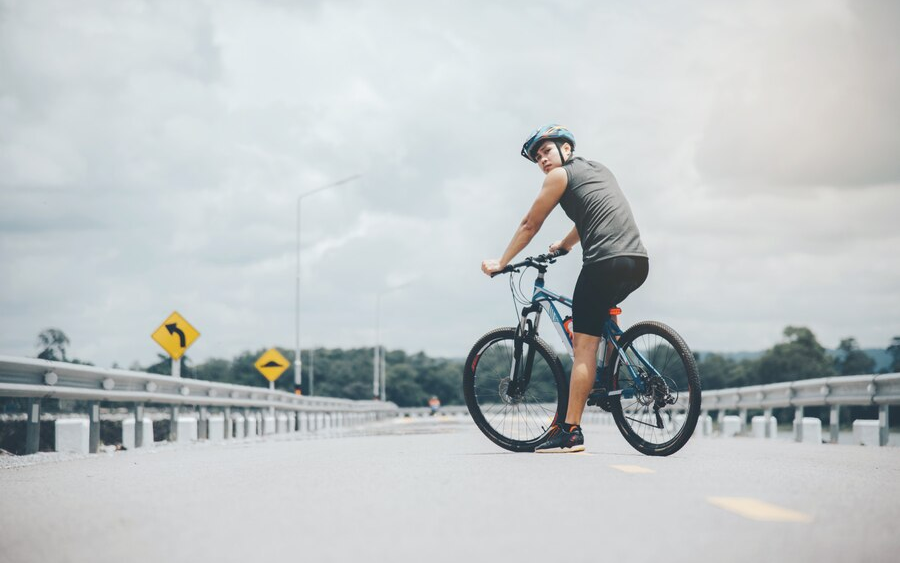
Adjust the seat height if needed, and make sure the brakes are working. To get off a bicycle, you need to slow down and stop safely. Then, put one foot on the ground and lean the bike slightly to that side. Swing your other leg over the seat and stand up.
5. Master the Basic Skills
Mastering the basic skills of riding a bike is not as hard as it may seem. You just need to follow three simple sub-steps: balancing, pedaling, and steering.
Balancing is the most important skill to learn. You need to keep your body upright and stable on the , without leaning too much to either side. To practice balancing, you can use a balance bike, a bicycle with training wheels, or a regular bicycle with the pedals removed.
Start by pushing yourself forward with your feet, and then lift them off the ground as you glide. Try to maintain your balance for as long as possible, and use your feet to brake and stop.

Pedaling is the next skill to master. You need to move your legs in a circular motion to propel the bicycle forward. To practice pedaling, you can use a bike with pedals and training wheels, or a regular bicycle with someone holding you.
Start by placing your feet on the pedals, and then push down on one pedal while lifting the other. Repeat this motion with alternating legs, and try to keep a steady rhythm. Use the brakes to slow down and stop.
Steering is another skill to learn. You need to turn the handlebars to change the direction of the bicycle. To practice steering, you can use a bicycle with or without training wheels, and ride on a flat and open area.

Start by riding in a straight line, and then gently turn the handlebars to the left or right. Avoid turning too sharply or suddenly, as this may cause you to lose balance. Look ahead and scan the road for any obstacles or hazards.
6. Learn How to Brake
Learning how to brake is an essential skill for riding a bike. You need to know how to use the brakes effectively and safely, depending on the type of bicycle and terrain.
For example, if you have a bike with disc brakes, you can apply more pressure on the brakes than if you have a bicycle with rim brakes. If you are riding on a slippery or uneven surface, you need to brake gently and gradually to avoid skidding or losing control.
To turn smoothly and correctly, you need to use your body position and hand signals. You need to lean your body into the turn, look where you want to go, and signal your intention with your hand.
To stop and dismount your bicycle gracefully and securely, you need to brake slowly and steadily, put one foot on the ground, and swing your other leg over the seat.
Practice & Progress
Practice and progress are the keys to becoming a better rider. You need to practice regularly and consistently, and to track your progress. Use a journal, an app, or a friend to record your achievements and goals.

You can also challenge yourself with some fun and exciting exercises and activities to improve your skills and confidence. For example, you can try to ride faster, longer, or on different terrains. You can also join a bike club, a race, or a charity event to meet other riders and have fun.
However, you should always be careful and follow the rules of the road.
Safety Tips
Safety tips are important for riding a bicycle. You need to follow the traffic rules, be visible and signal your intentions, and ride defensively. Following the traffic rules means obeying the signs, signals, and laws that apply to cyclists.
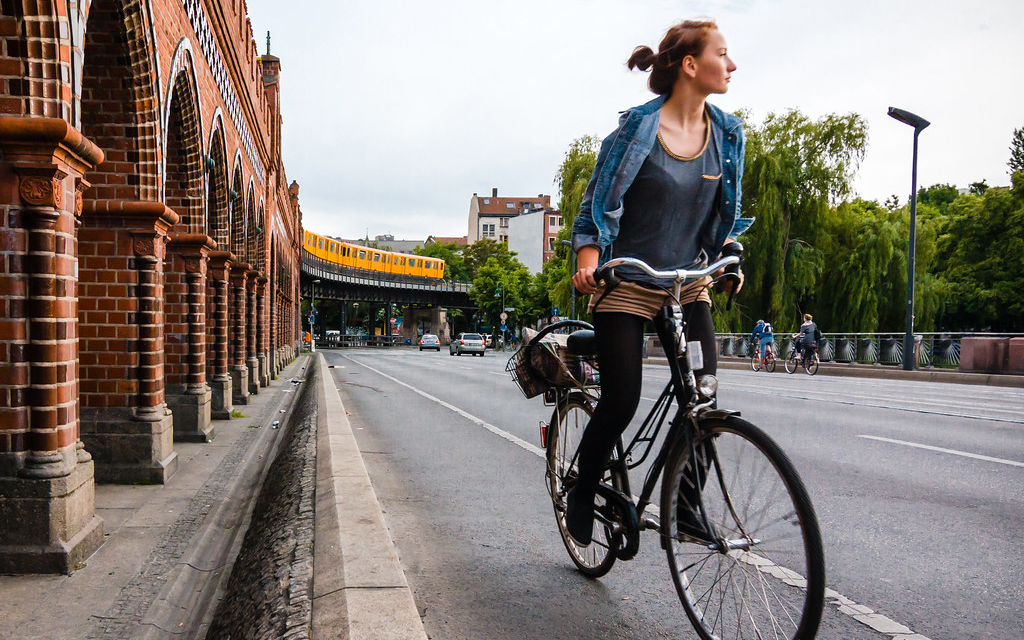
You should also ride on the right side of the road, unless you are turning left or passing. Being visible and signaling means wearing bright or reflective clothing, using lights and reflectors, and using your hand or arm to indicate your turns and stops.
Riding defensively means being aware of your surroundings, anticipating hazards, and avoiding conflicts with other road users. By following these safety tips, you will reduce the risk of accidents and injuries, and enjoy riding a bicycle more.
Conclusion
You have learned how to ride a bike in a few easy steps. Congratulations! You are now ready to enjoy the benefits of cycling, such as improved health, reduced stress, and fun. Whether you want to ride for leisure, fitness, or transportation, you can find a bicycle that suits your needs and preferences.
Remember to always wear a helmet, follow the traffic rules, and be alert and courteous on the road. We hope this guide was valuable and informative. Share your insights, questions, and experiences in the comment section. Your feedback is welcome!
FAQs
Learning times vary, but with consistent practice, most beginners can ride confidently within a few hours to a few days.
Practice balance by straddling the bicycle, keeping feet flat, and gradually lifting them while maintaining stability.
Most children are ready and willing to learn between 3 and 8 years old.
It can be challenging at first, but with patience and practice, it becomes easier and fun.

